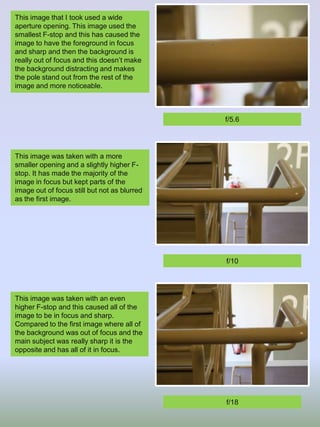The document discusses aperture, shutter speed, and ISO settings on cameras and how they affect images. It explains that:
- Aperture controls depth of field, with lower f-stops giving a wider opening and shallower depth of field. Wider apertures are used for portraits while smaller apertures give greater depth of field for landscapes.
- Shutter speed determines how long the shutter is open, with faster speeds freezing motion and slower speeds blurring it. Faster speeds are needed in bright light to avoid overexposure while slower speeds allow more light for low-light shots.
- ISO makes the camera more or less sensitive to light, with higher ISOs allowing faster shutter speeds or smaller











